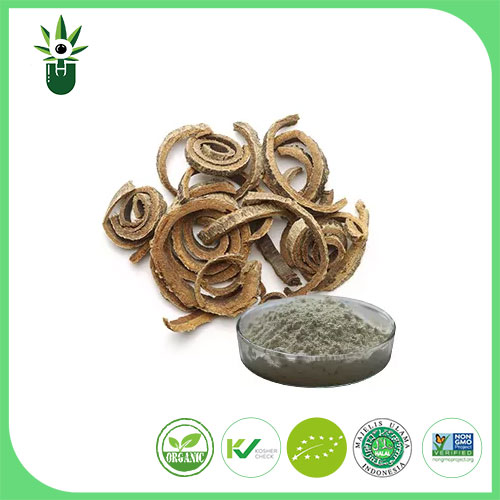
- English
- Español
- Português
- русский
- Français
- 日本語
- Deutsch
- tiếng Việt
- Italiano
- Nederlands
- ภาษาไทย
- Polski
- 한국어
- Svenska
- magyar
- Malay
- বাংলা ভাষার
- Dansk
- Suomi
- हिन्दी
- Pilipino
- Türkçe
- Gaeilge
- العربية
- Indonesia
- Norsk
- تمل
- český
- ελληνικά
- український
- Javanese
- فارسی
- தமிழ்
- తెలుగు
- नेपाली
- Burmese
- български
- ລາວ
- Latine
- Қазақша
- Euskal
- Azərbaycan
- Slovenský jazyk
- Македонски
- Lietuvos
- Eesti Keel
- Română
- Slovenski
- मराठी
- Srpski језик
Licorice Extract
Licorice has been recorded in Chinese herbal books throughout history. Licorice extract is not only a good medicine, but also known as the "king of various medicines" and has certain therapeutic effects on treating chronic bronchitis and asthmatic bronchitis. Licorice can also detoxify hundreds of medicines, symbolizing "detoxification" among Chinese people, and because it can harmonize hundreds of medicines, it has the meaning of "harmony, mediation".
Send Inquiry
The dried roots of licorice are long cylindrical, unbranched, and cut into sections 30 to 120 cm long and 0.6 to 3.3 cm in diameter. The outer skin of licorice with skin varies in tightness and is reddish-brown, brown or gray-brown, with obvious wrinkles, grooves and sparse fine root marks. The lenticels are horizontal, slightly protruding, and dark yellow. The cut surfaces at both ends are flush and the center of the cut surface is slightly sunken. The quality is solid and heavy. The cross-section is fibrous, yellow-white, and powdery, with an obvious ring pattern and chrysanthemum center, often forming cracks. It has a slightly specific aroma and a sweet and special taste. The shape of the rhizome is similar to that of the root, but there are bud marks on the surface and a pith in the center of the cross section. The appearance of pink grass is flat, light yellow, fibrous, and has longitudinal cracks. The peeled licorice has a thin, tight skin with furrows, reddish brown, firm texture, sufficient powderiness, and a yellow-white cross-section. This product is a licorice extract derived from the dried roots of the leguminous plants Glycyrrhiza uralensis Fisch., Glycyrrhiza inflata Bat. or Glycyrrhiza glabra L.



Product introduction
|
Product name |
Licorice extract |
|
Source |
Glycyrrhiza uralensis |
|
Extraction part |
dried root |
|
Specifications |
Glycyrrhizic acid 20%-98% |
|
Appearance |
Yellow to brown fine powder |
Application
1. Medicine;
2. Health food
2. Cosmetics;
3. Sweetening additives.














